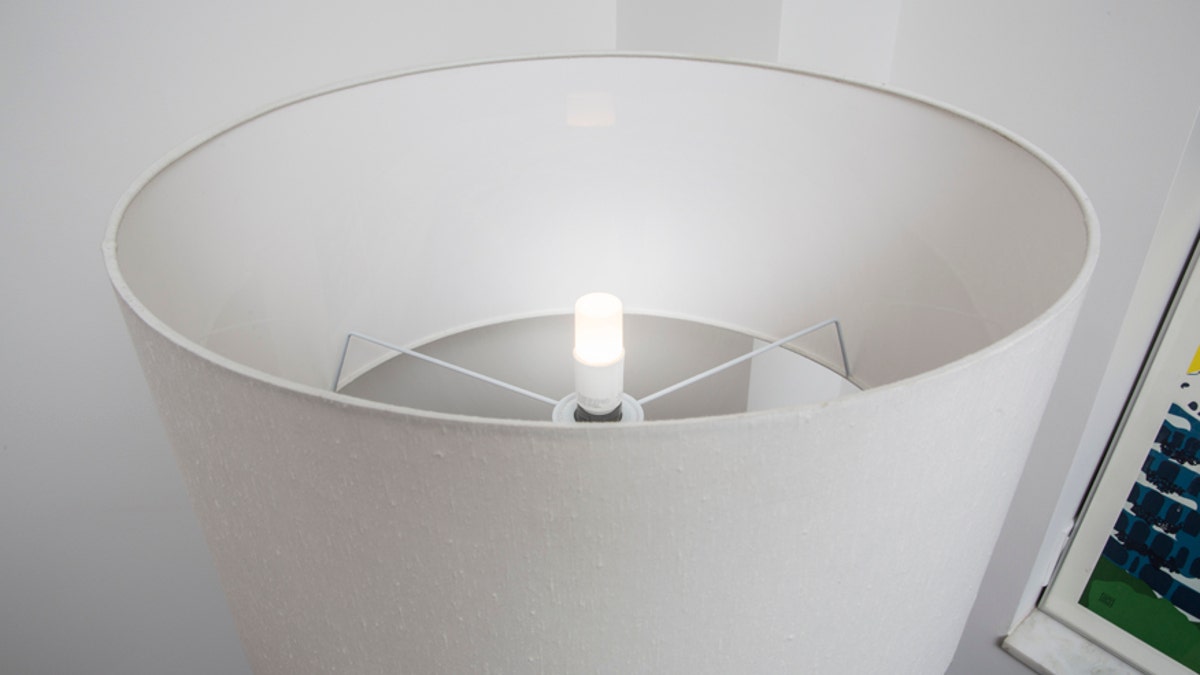
LED Bright Stik. (GE)
The cheaper a technology becomes, the more pervasive it gets. So the precipitous price drops in the LED bulb market mean it's ready to go mainstream -- although you may need a few pointers about how to choose the right LEDs for your home.
Just a few years ago, a 60-watt equivalent LED or light-emitting diode bulb cost $40 to $50. Last year, more advanced LED bulbs dropped to $10 each. A year on, prices have dropped 50 percent, with bulbs from TCP and Philips now under $5. GE is continuing the price war this summer with a new line of even smaller, less expensive bulbs dubbed the LED Bright Stik.
A package of three LED Bright Stik bulbs costs just under $11. That puts the per light price below the $4 mark. They use 10 watts of power, versus a 60-watt incandescent, but they are not dimmable.
Sure, incandescents only cost a buck each, but they suck six times the electricity and burn out faster than you can say "Penny Farthing." Conservatively, an LED equivalent will last for 14 or more years (yes, years), according to manufacturers. And you'll save on your electric bill. When I converted to LEDs a couple of years ago, my electric bill dropped by $35 a month.
LEDs are also safer than compact fluorescent lights (CFLs), which one tends to handle like nitroglycerin because they contain mercury that can vaporize if dropped. LEDs are also superior to CFLs because LEDs turn on instantly and start to gradually dim before they burn out. CFLs and incandescents don't give you any warning at all.
However, there's no such thing as a one-size-fits-all LED. For example, they have different light output levels.
To begin with there are the lumens ratings, which describe brightness. A typical 60-watt incandescent emits about 820 lumens; so-called 60-watt equivalent LEDs emit about 800 lumens. The GE Bright Stiks emit 760 lumens.
More noticeable, however, is that some people find LED lights harsher than their old-fashioned predecessors. That has to with the color temperature of the bulb. A “soft white” bulb that offers a yellowish cast similar to an incandescent will have a color temperature rating of about 2700 Kelvin. A daylight or natural light bulb will usually have a 5000 K rating and a bluish tinge. Some people in the sunny south prefer the harsher daylight bulbs; folks in the gloomy northeast tend to buy more candle-like yellow bulbs.
In addition to brightness and color temperature there's another factor that can affect whether you see an LED light as pleasing or distracting. It has to do with its color rendering index, or CRI rating. The CRI is a measure of how accurately it creates the full spectrum of light, which in turn affects how accurately the colors of things it illuminates appear (a yellow bowl or a pink shirt may look white, for example, under some lights). A perfect CRI rating would be 100, but most bulbs garner a CRI of about 80. The new GE Bright Stiks have a CRI of 78.
Unfortunately, simply choosing a bulb with a CRI of 80 doesn't tell you much about whether the colors it reveals will be pleasing or not. Why? Because the CRI number doesn't indicate where in the color spectrum the light is deficient. In other words, it may still noticeably emphasize one color, say red, over another, like blue. If you're concerned about color accuracy I recommend enhanced spectrum bulbs with a CRI rating of 90 or higher.
The next wave of LEDs flooding stores are networked bulbs with built-in Bluetooth that can change color, play music, and eventually even act as smoke detectors and security cameras (check out the Sengled Pulse bulbs). GE and others have already announced plans to make their bulbs work with Apple's HomeKit smart home platform, for example. It means that even if these new, cheaper LEDs will last for 14 years, you may end up replacing them long before that.
